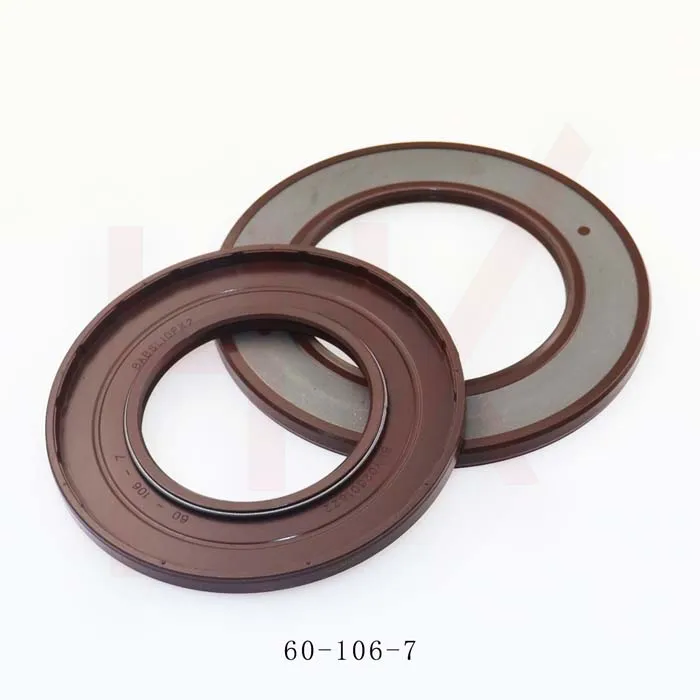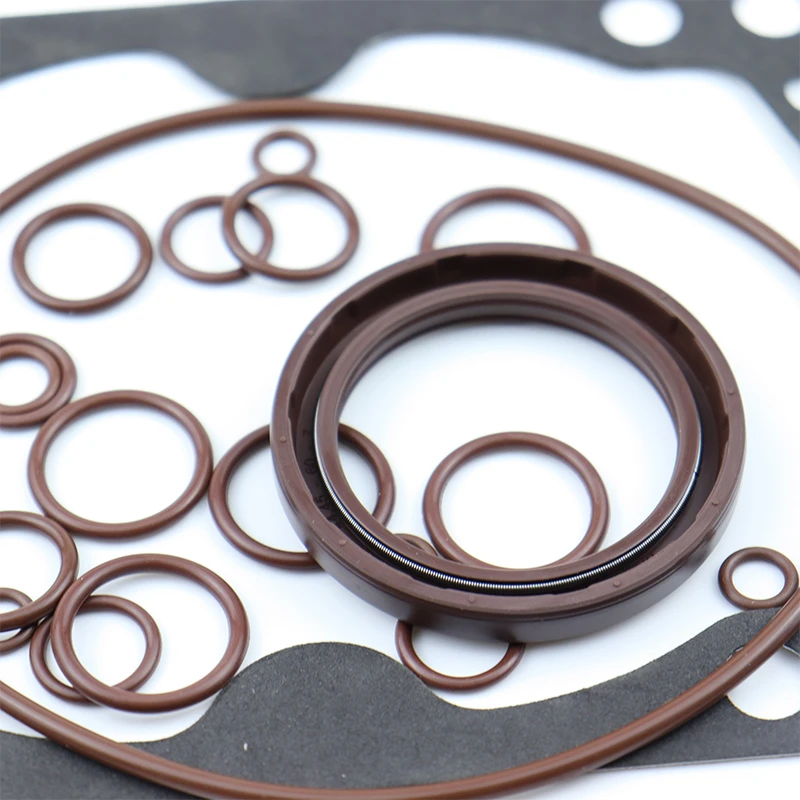Jan . 26, 2025 03:13 Back to list
170×190×13 Tcv Oil Seal High Pressure Oil Seal Hydraulic Pump Seal
The shaft oil seal, often overshadowed by more conspicuous components in mechanical systems, plays a pivotal role in engineering applications. It ensures the seamless operation of machinery by preventing the leakage of lubricants and thereby sustaining optimal performance. A crucial element in a plethora of industries, the shaft oil seal demands careful attention and understanding to fully leverage its benefits.
In recent years, advancements in technology have introduced innovations in the realm of shaft oil seals. Manufacturers now utilize cutting-edge materials and design methodologies to produce seals with improved performance metrics. Computational simulations play a vital role in refining the design, allowing engineers to predict stress points and optimize the seal geometry for enhanced effectiveness. Moreover, the concept of sustainability has permeated the engineering landscape. Modern shaft oil seals are increasingly being designed with eco-friendly processes, reducing material waste and energy consumption during manufacturing. This trend aligns with global efforts to minimize carbon footprints and protect the environment, resonating with industries seeking green solutions. However, the crux of optimizing shaft oil seal performance lies in maintenance. Regular inspection and timely replacement of worn seals are imperative. A neglected seal can lead to catastrophic failures, escalating repair costs, and unplanned downtime. Implementing a robust maintenance regimen, guided by thorough documentation and performance logging, ensures that machines operate at peak efficiency. Establishing trust with your clientele also hinges on the quality assurance processes adhered to during the production of shaft oil seals. Reputable manufacturers subject their products to rigorous testing, complying with international standards to ensure reliability and longevity. This commitment to quality builds credibility and fosters long-term relationships with customers. To summarize, the shaft oil seal is an indispensable component that requires astute understanding and expertise to employ effectively. Its role in maintaining lubricant integrity and safeguarding machinery underpins its significance in engineering. By embracing innovations, committing to sustainability, and upholding stringent maintenance practices, industries can fully exploit the potential of shaft oil seals, ensuring their systems run smoothly and efficiently — a testament to the seal's enduring value and importance.


In recent years, advancements in technology have introduced innovations in the realm of shaft oil seals. Manufacturers now utilize cutting-edge materials and design methodologies to produce seals with improved performance metrics. Computational simulations play a vital role in refining the design, allowing engineers to predict stress points and optimize the seal geometry for enhanced effectiveness. Moreover, the concept of sustainability has permeated the engineering landscape. Modern shaft oil seals are increasingly being designed with eco-friendly processes, reducing material waste and energy consumption during manufacturing. This trend aligns with global efforts to minimize carbon footprints and protect the environment, resonating with industries seeking green solutions. However, the crux of optimizing shaft oil seal performance lies in maintenance. Regular inspection and timely replacement of worn seals are imperative. A neglected seal can lead to catastrophic failures, escalating repair costs, and unplanned downtime. Implementing a robust maintenance regimen, guided by thorough documentation and performance logging, ensures that machines operate at peak efficiency. Establishing trust with your clientele also hinges on the quality assurance processes adhered to during the production of shaft oil seals. Reputable manufacturers subject their products to rigorous testing, complying with international standards to ensure reliability and longevity. This commitment to quality builds credibility and fosters long-term relationships with customers. To summarize, the shaft oil seal is an indispensable component that requires astute understanding and expertise to employ effectively. Its role in maintaining lubricant integrity and safeguarding machinery underpins its significance in engineering. By embracing innovations, committing to sustainability, and upholding stringent maintenance practices, industries can fully exploit the potential of shaft oil seals, ensuring their systems run smoothly and efficiently — a testament to the seal's enduring value and importance.
Latest news
-
Wiper Oil Seal: Our Commitment to Clean Hydraulics
NewsAug.13,2025
-
Hydraulic Oil Seal for Self Discharging Cars
NewsAug.13,2025
-
Hub Oil Seal for Agricultural Tractor Hubs
NewsAug.13,2025
-
Skeleton Oil Seal with NBR Material
NewsAug.13,2025
-
Rotary Lip Seal for High Pressure Applications
NewsAug.13,2025
-
Cylinder Seal Kits Our Legacy of Hydraulic Trust
NewsAug.13,2025
-
Unlocking the Potential of Hydraulic Systems with Essential Sealing Solutions
NewsAug.06,2025
Products categories
















